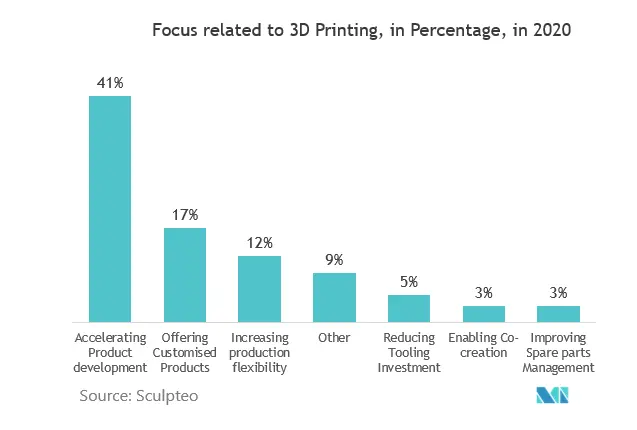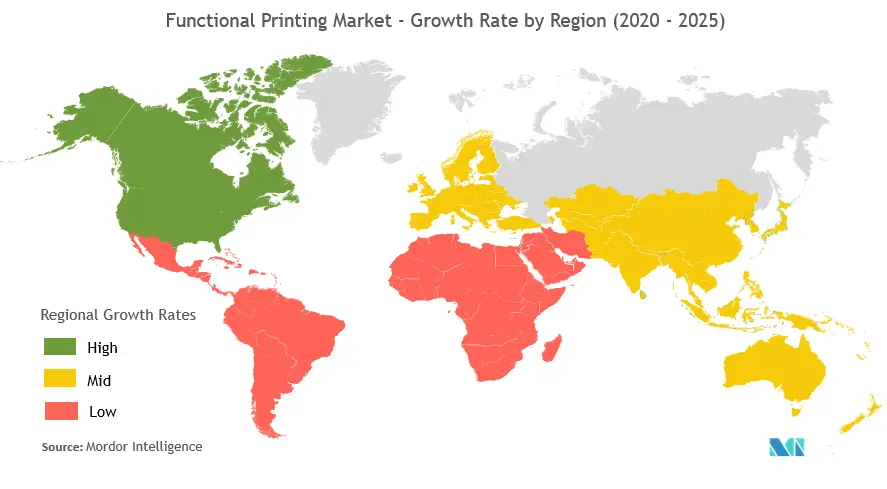Market Trends of Functional Printing Industry
This section covers the major market trends shaping the Functional Printing Market according to our research experts:
Inkjet Printing to Significantly Drive the Market Growth
- Inkjet technology’s first primary application was the production of cost-effective office and graphic arts printers, which has grown into a multi-billion-dollar market. The proliferation of technology has led it to enter into other markets, such as product decoration, the fabrication of flat panel display devices, biochip production, and printable electronics. These, along with other applications, are important if the industry has to sustain healthy growth.
- The adoption of inkjet printing is growing because it offers significant advantages across various supply chains. The developments shown at Drupa, the largest printing equipment exhibition in the world are expected to further accelerate widespread adoption. Besides, with the increasing demand for 3D printing, this technology is expected to expand globally.
- Furthermore, the adoption of cut-sheet inkjet printers is very likely to lead to a virtuous cycle of application and page volume expansion. This technology exists, along with various other printing technologies, but its rapid turnaround times, flexibility in productivity, and ability to print variable data, while offering attractive profit margins, is making inkjet a tool that print-service providers and in-plant printing operations require.
- The digital versatility and quick prototyping of 3D printing empowers a swift mobilization of the technology and hence a rapid response to emergencies. Even during severe disruptions in supply chains, critical parts can be manufactured on-demand by any decentralized 3D-printing facility in the world by leveraging designs shared online.

North America is Expected to Hold a Major Market Share
- The increasing demand for near-field communication (NFC) in North America is expected to drive the market in the region. With smartphone technology changing at a fast pace, mobile phones are considered as the primary option for the payments. As payments are easier and hassle-free with the presence of NFC chip on the smartphone, it has been chosen by the majority of people who want to perform a transaction from their handheld devices.
- Printed UHF-RFID enables integration with everyday objects or packaging in supply chain management, either by printing the antenna on a flexible substrate which is attached to the object, or by printing directly on the packaging.
- Moreover, the growth in the retail industry in the region is likely to boost the use of RFID tags, thereby fueling the market growth. RFID automates the tracking of merchandise throughout the retail supply chain, from the warehouse to the store floor, replacing the process of employees scanning products manually.
- As the cost of RFID has fallen dramatically, an RFID tag was initially priced at about USD 1 in 2003 and is roughly 10 cents presently, retailers are starting to upgrade to the technology to access an item-level view of their in-store and online inventory.
- There are significant changes in raw materials, largely due to the uncertain impact of the coronavirus, which is tragically impacting countless thousands of people. the American Coatings Show was just postponed, and FESPA was postponed in March 2020. Ink companies are trying to determine the ramifications of the coronavirus on their supply chain, as shipments from China are on hold.


